Photographing the African American Baseball Experience

Negro League baseball is one of the great eras in the sport’s history. It’s also one of the least documented. Sportswriters at African American newspapers covered games and players, but they didn’t generate the same kind of attention as the all-white teams of Major League Baseball.
That makes the work of photographer Charles “Teenie” Harris all the more valuable. For nearly 70 years, Harris documented the black experience in Pittsburgh. And that includes baseball.
Through October 12, the Carnegie Museum of Art in Pittsburgh is displaying 25 of Harris' remarkable baseball photos in the exhibition Teenie Harris Photographs: Baseball in Pittsburgh. Legends like Jackie Robinson and Roberto Clemente appear in the images, as do black youth baseball teams and members of the Homestead Grays, New York Cubans, and other Negro League clubs.
“Negro League baseball is an interesting thing to deal with, historically, because there are so few records of actual games,” says Louise Lippincott, the manager of the Teenie Harris Archive at the museum. “So for the real baseball fans or aficionados, there’s an awful lot of information in these photographs that be used to build out the history of Negro League baseball further.”
A Born Sports Photographer
Harris was born in Pittsburgh’s Hill District in 1908. The earliest photos in his archive date back to 1918. He obtained his first camera in the 1930s and began working as a professional photographer 1938.
But sports was always an important part of his life. He played both baseball and basketball, and in the mid-1920s co-founded and played shortstop for the Pittsburgh Crawfords, a sandlot team that would eventually become one of the most important teams in the Negro Leagues.
Harris didn’t make the transition to the pros — he apparently couldn’t hit the curve — so he began photographing the game instead.
“His earliest baseball photos are Negro League games at Greenlee Field, and they involve either the Crawfords or the Grays or the Crawfords against the Grays,” Lippincott says. “So he starts off with the Negro Leagues big time. I think the earliest dated photo we have includes Josh Gibson playing at Greenlee Field.”
A Family Affair
Gibson, the legendary catcher for the Homestead Grays, is an important part of the exhibition — partly because of his role in the Negro Leagues’ story, but mostly because his great grandson Sean curated the show.
The Executive Director of the Josh Gibson Foundation, Sean Gibson grew up in the Hill District with stories about his famous great grandfather. But he was also surrounded by Harris’ photos.
“As an African American kid you hear a lot about him in different restaurants or different banks in the Hill District,” Gibson says. “People will always be, like, ‘Oh, that’s a Teenie Harris.’ So I definitely knew about him, knew about his work, [before curating the exhibit.]”
Gibson says he didn’t know much more about Harris’ work than what he had seen in his neighborhood. But when he began sifting through the hundreds of baseball photos in the archive, he discovered how inclusive Harris was in his photography.
According to Lippincott, the most in-depth sequence of baseball images in the archive is from the opening of the 1953 Uptown Little League, the first integrated Little League team in Pittsburgh. The event was opened by Jackie Robinson and Roy Campanella.
“If you take one look at Teenie’s photos, he didn’t just shoot photographs of African Americans. He took photos of everyone,” Gibson says. “It was from the local Little League teams to Negro League teams to sandlot teams. So that’s what I really enjoy.”
A Unique View of America’s Pastime
While Harris captured moments of white and black kids playing together, the overriding story of the photos is that of the African American baseball experience.
There are numerous photos in the show (and the online archive) of all-black youth and sandlot teams to go with the Negro League photos. And he doesn’t begin photographing the Pittsburgh Pirates until Curtis Roberts integrates the team in 1954.
White pros like Ted Williams and Yogi Berra do show up in a few of the images — Harris photographed the 1959 All-Star Game at Forbes Field — but in general “he was not that interested,” Lippincott says.
“He was interested in the black players, so those were the guys he photographed,” she adds. “This exhibition, you see baseball from a black perspective, and that doesn’t happen very often.”
Teenie Harris Photographs: Baseball in Pittsburgh is on view for another week. But if you can’t make it to Pittsburgh, you can see more of Harris’ baseball photos in the slideshow below. You can also see all of his baseball photos — and a whole lot more — in the Teenie Harris online archive.



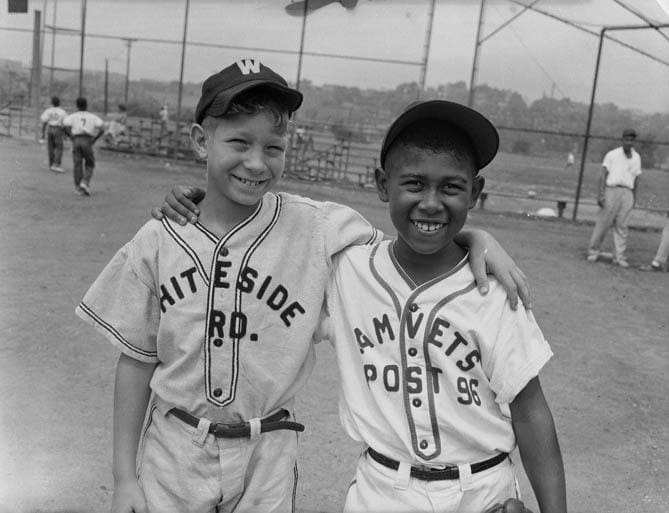
Two Little League baseball players, including one wearing Whiteside Road uniform, and Gary Henderson in Amvets Post 96 uniform, standing on playing field, c. 1953–1956
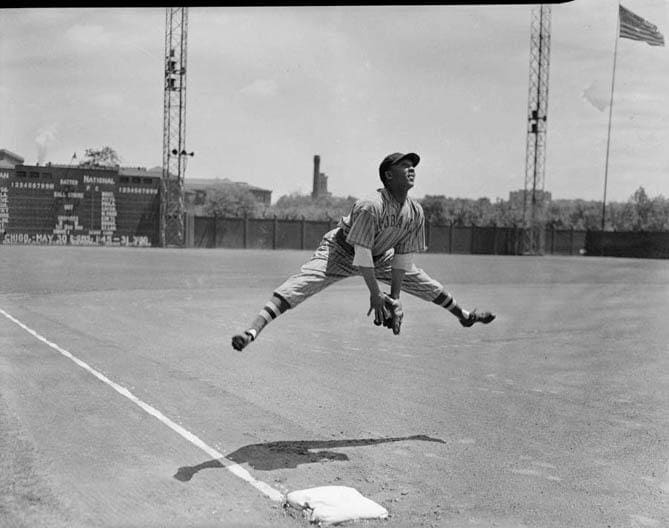
New York Cubans baseball player Horacio Martinez leaping above third base at Forbes Field , 1941
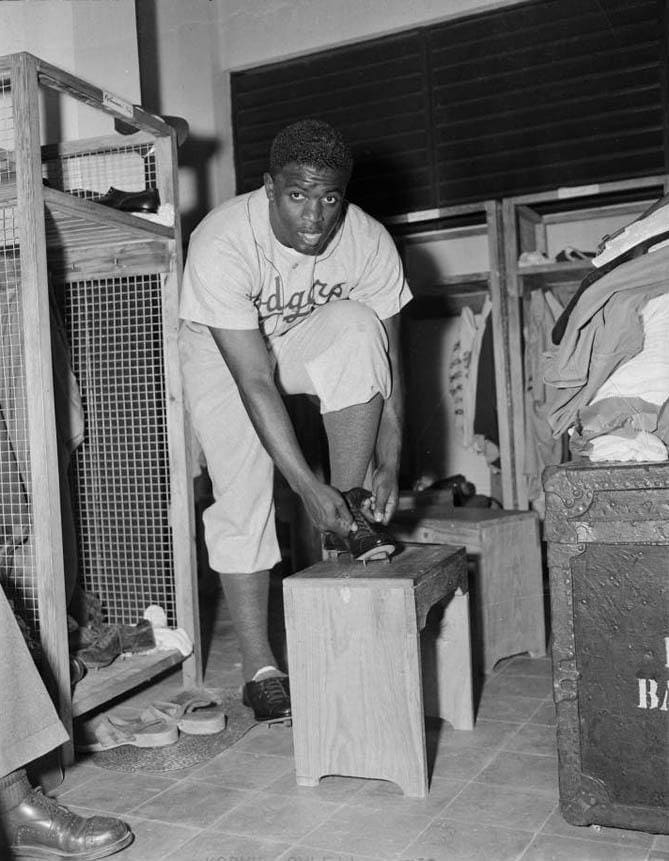
Brooklyn Dodgers baseball player Jackie Robinson tying spikes in locker room, c. 1947
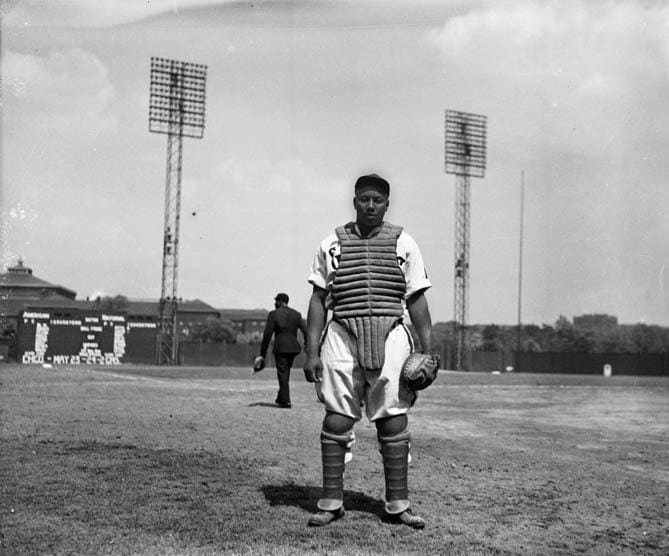
Homestead Grays baseball catcher Josh Gibson standing on Forbes Field, 1942
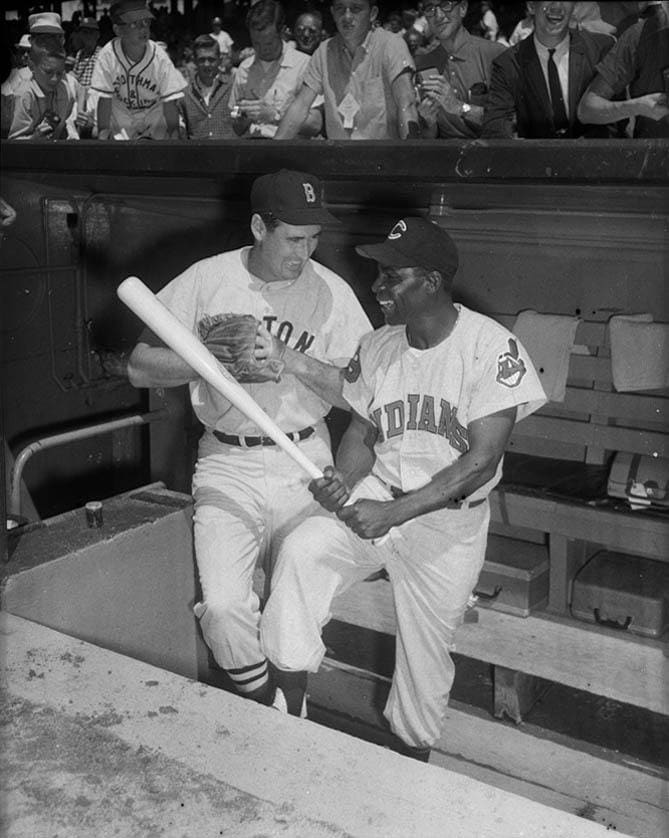
Boston Red Sox baseball player Ted Williams and Cleveland Indians player Minnie Minoso, posed with glove and bat in dugout for 1959 All Star Game, Forbes Field, July 1959
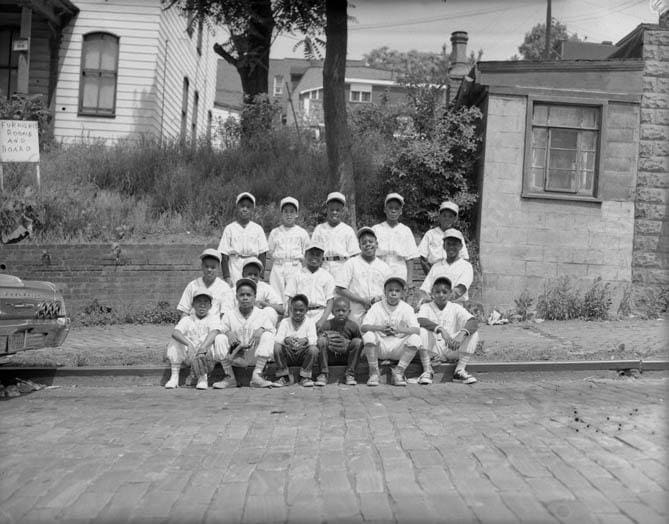
Group portrait of sixteen boys, all but two in Astros baseball team uniforms, gathered on curb of Belgian block street, with houses in background, 1965
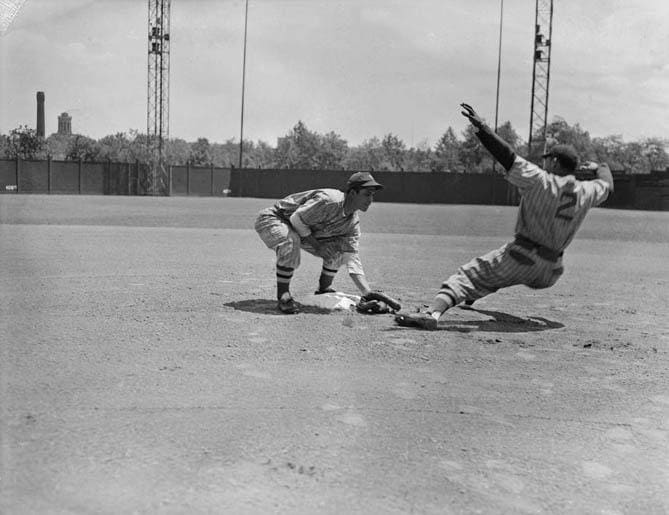
Two New York Cubans baseball players, infielder and runner, no. 2, simulating put out on second base at Forbes Field, 1941
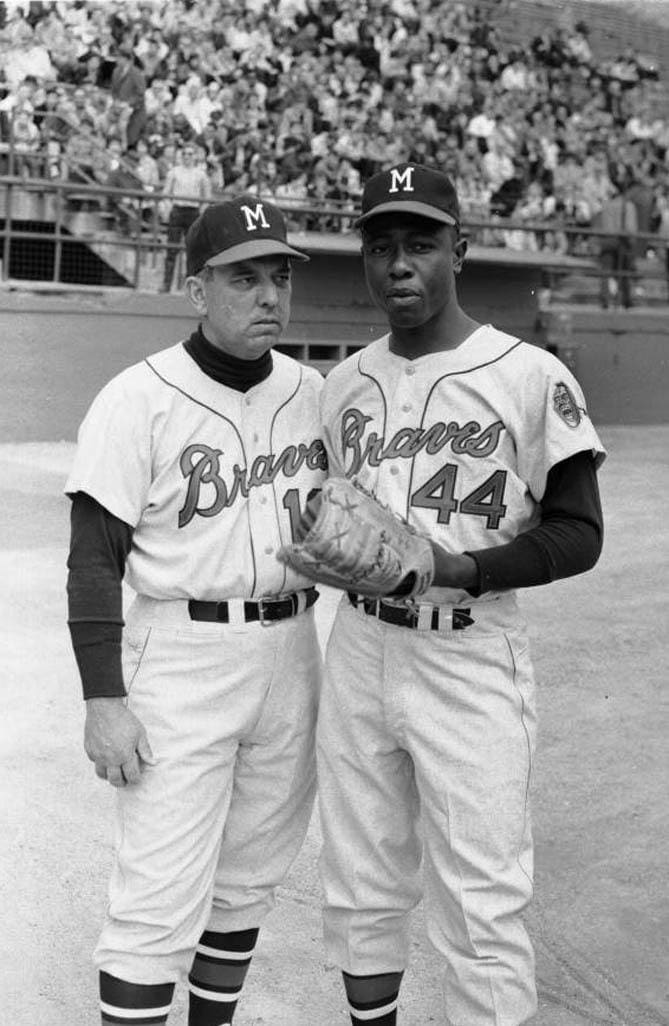
Two Milwaukee Braves baseball players, including no. 44 Hank Aaron, posing at Forbes Field
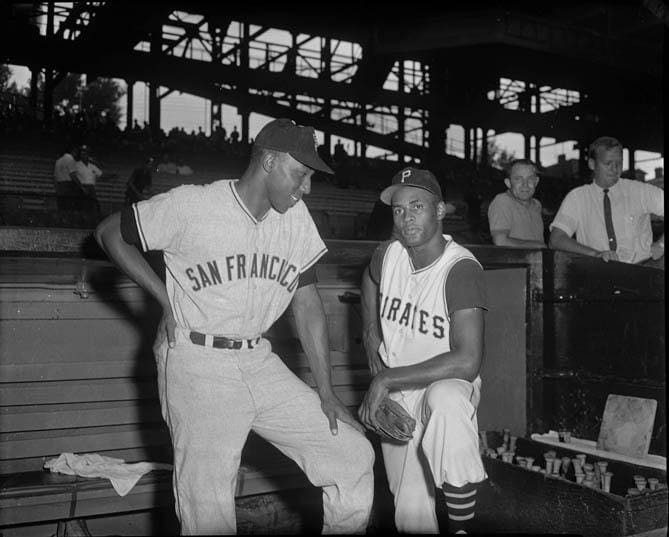
San Francisco Giants baseball player Willie McCovey with Pittsburgh Pirates player Roberto Clemente, posing in front of dugout at Forbes Field, c. 1960
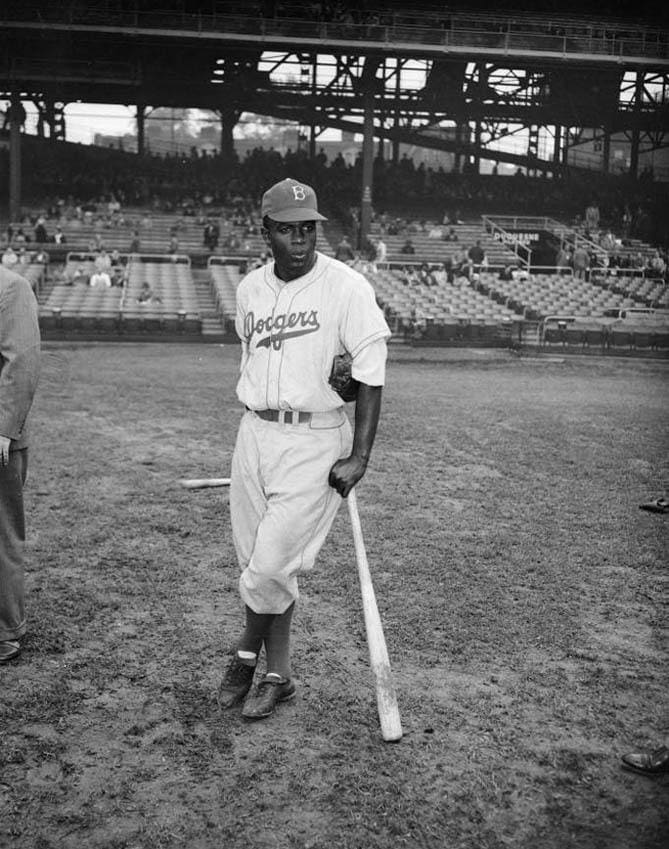
Brooklyn Dodgers baseball player Jackie Robinson at Forbes Field, Oakland, c1947
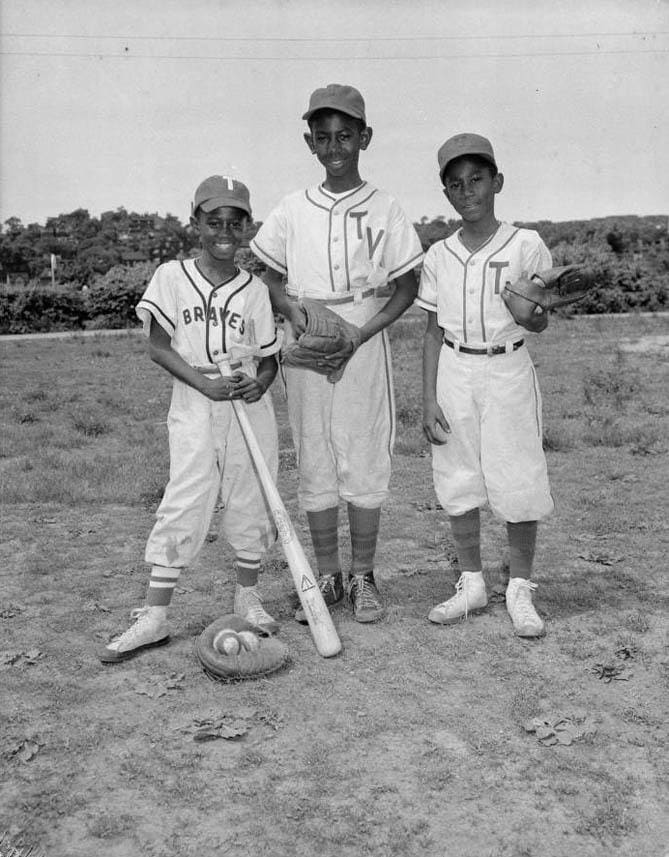
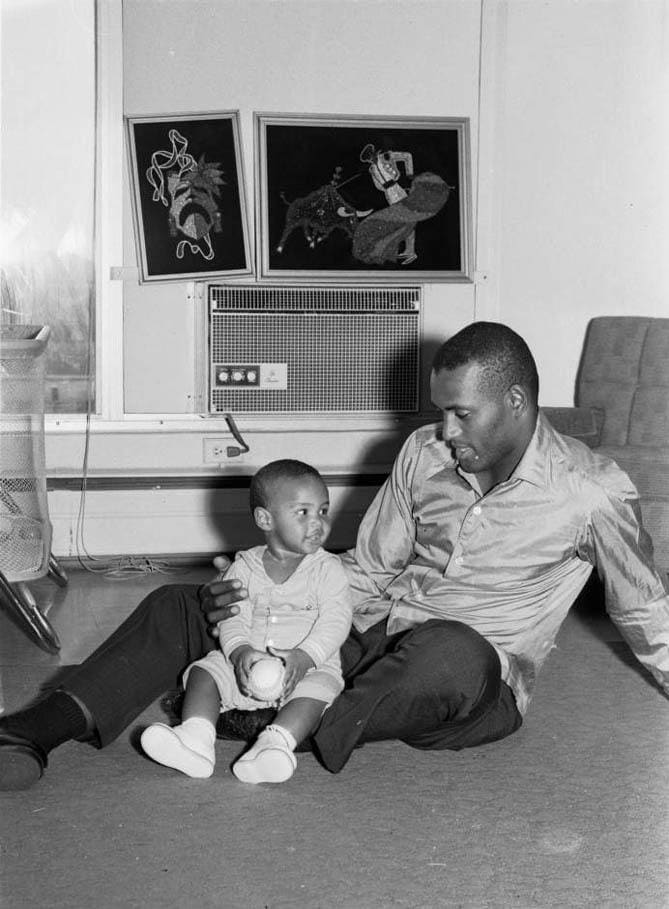
Roberto Clemente and his son Roberto Clemente Jr. seated on floor, in their apartment in East Liberty, June 1966
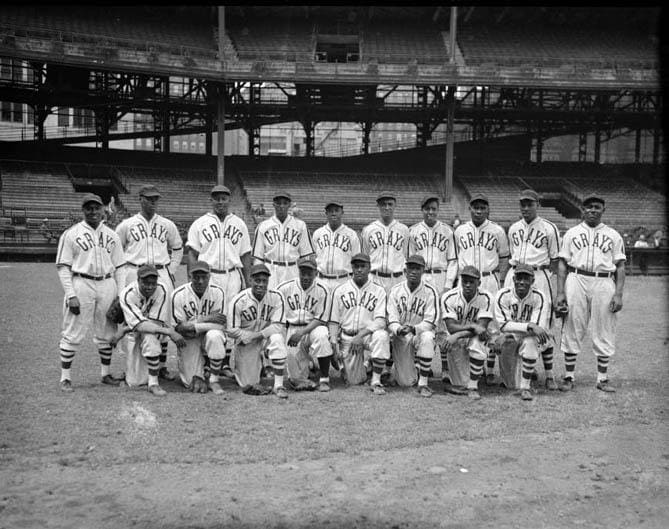
Homestead Grays baseball team, kneeling from left: Dave Whatley, Jud Wilson, Matt Carlisle, Frank "Shorty" Williams, Sam Bankhead, Roy Welmaker, Howard Easterling, Vic Harris; standing: Jerry Benjamin, Roy Partlow, Josh Gibson, Johnny Wright, Chester Williams, Ray Brown, Hymie Leftwich, J. C. Hamilton, Robert Gaston, and Buck Leonard, at Forbes Field, 1945
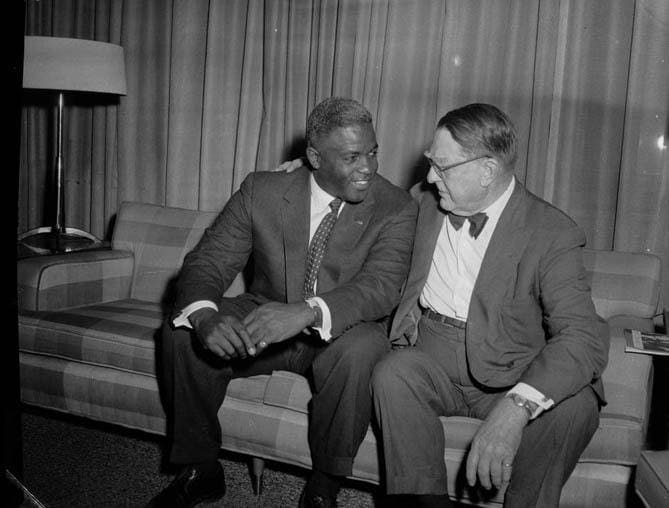
Baseball executive Branch Rickey and baseball player Jackie Robinson seated on sofa in hotel, June 1957
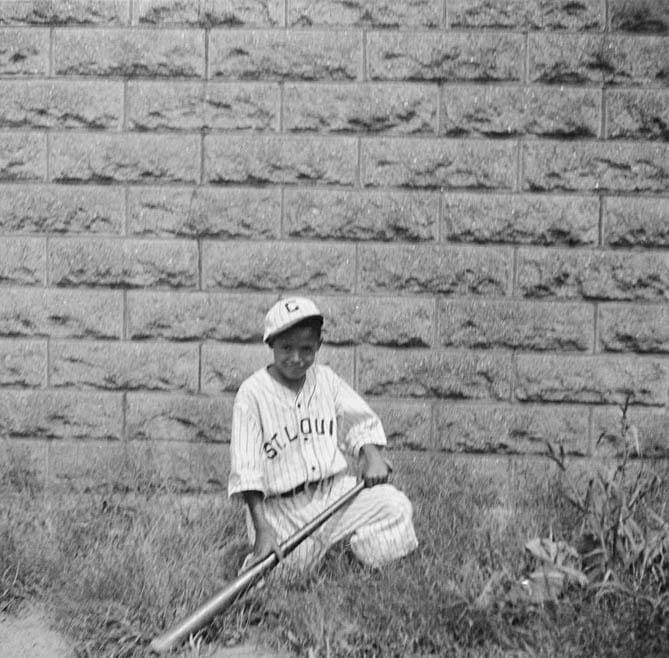
Portrait of Charles A. "Little Teenie" Harris wearing St. Louis Cardinals' baseball uniform kneeling with bat, outside home at 7604 Mulford Street, Homewood
Photos: Charles “Teenie” Harris, © 2006 Charles “Teenie” Harris Archive, Carnegie Museum of Art, Pittsburgh
